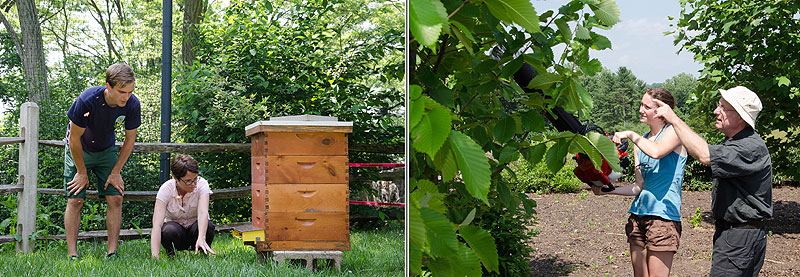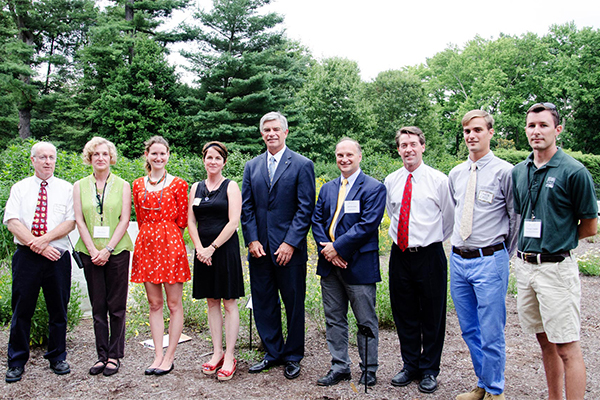
Mt. Cuba Center Fellowship

Mt. Cuba Center Fellowship
The University of Delaware and Mt. Cuba Center have entered into a new research collaboration to assess the ecological value of native plants, and determine if insects are more attracted to ‘store bought’ native plants or plants that grow in the wild.
The project involves two separate studies led by UD’s Doug Tallamy and Deborah Delaney who seek to add ecological value to the list of attributes gardeners should consider when making choices for their gardens and landscapes.
Tallamy, professor in the Department of Entomology and Wildlife Ecology (ENWC), and Delaney, assistant professor in the department, are both assisted in their research by Mt. Cuba Center Fellows Emily Baisden and Owen Cass, who are graduate students in UD’s entomology and wildlife ecology program.
The research projects will last for two years and are taking place at two trial gardens at Mt. Cuba Center, located on Barley Mill Road near Hockessin, Delaware, at apiaries at both Mt. Cuba Center and UD’s College of Agriculture and Natural Resources (CANR), and at laboratory space at CANR.
Determining the ecological role of flowering plants as nutritional forage for pollinators: You are what you eat!
Dr. Deborah Delaney, Assisted by Mt. Cuba Fellow, Owen Cass
Abstract: This project will develop a digital pollen library of the Mid-Atlantic flowering plants and different cultivars of indigenous species. The nutritional quality of pollen and nectar collected from flowering plants will be analyzed for total amino acid content, crude protein, fatty acids and sterols, total carbohydrates and vitamins and minerals. This project seeks to determine if there are differences in the nutritional value of pollen and nectar from different cultivars of plants, and to see if there are differences in the morphology of pollen among cultivars. This project also will track the attractiveness of foraging resources to determine which plants act as an ecological asset to the landscape. Finally this project will correlate nutritive value of foraging resources with pollinator abundance and diversity measures. From the data collected we hope to provide nursery managers, homeowners, growers and landscape artists with recommendations on planting assemblages that will add aesthetic value to their property while providing an ecological service; nutrition for pollinators
Do cultivars of native plants support food webs as well as their parent species?
Dr. Douglas Tallamy, Assisted by Mt. Cuba Fellow, Emily Baisden
Abstract: Homeowners, land managers, landscapers, landscape architects, and landscape designers around the country are beginning to use more native plant species in their gardens than they have in the past with hopes of boosting local biodiversity. A problem they encounter immediately is that most native plant species in the trade are available only as cultivars. If an important goal of native plant landscaping is to improve the ecological integrity of the landscape, it is necessary to learn whether cultivars of native species support food webs as well as their parent species. This study will use selected woody plants in replicated common gardens to measure the impact of altering leave color, agricultural productivity, disease resistance, and plant habit on the diversity and abundance of caterpillars. (Changes in flower color and shape will be addressed in a different study). Data from this study will be used to predict the ecological consequences, if any, of altering leaf color and plant habit in native plants to increase their aesthetic value.

